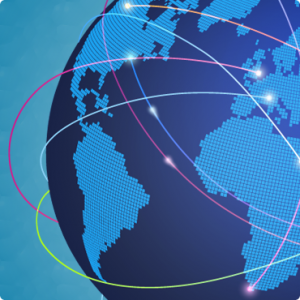This post has already been read 14501 times!
 Although we probably don’t spend much time thinking about it, we inhabit a world filled with networks, some obvious, some hidden. These networks have a surprising amount of influence over our lives. I recently came across a great post over at the Oxford University Press blog from two authors of a book on network theory, Networks: A Very Short Introduction. My favorite part of the post was this:
Although we probably don’t spend much time thinking about it, we inhabit a world filled with networks, some obvious, some hidden. These networks have a surprising amount of influence over our lives. I recently came across a great post over at the Oxford University Press blog from two authors of a book on network theory, Networks: A Very Short Introduction. My favorite part of the post was this:
Thanks to a single Facebook post in 2010, an extra 340,000 people went to vote in the 2010 USA Congress elections. This striking discovery, made by political scientist James Fowler and colleagues, reveals the extent to which social networks can influence the basic workings of democracy. Of course, Facebook is just one of the many networks in which people today have embedded themselves. Every day, a typical person might meet friends and colleagues, log in to email and twitter accounts, send text messages and answer phone calls. There’s more: when this typical person takes a plane, makes purchases, or transfers money, it implicates her in further networks. In an IT intensive society, all these actions leave tracks. This poses huge privacy protection questions, but it also provides an unprecedented opportunity to study people and networks quantitatively.
Centuries have passed since mathematician Leonard Euler showed for the first time that thinking in terms of networks can be extremely revealing: he solved the Königsberg bridge problem (can the seven bridges of the city of Königsberg all be traversed in a single trip without doubling back?) by applying logic in this way. Decades have passed since sociologists and psychologists started to draw maps of human relations. But the science of networks has still much to tell, and the current data deluge is giving it a second youth. So how has thinking in terms of ‘networks’ helped us in recent years?
The authors go on to cite examples of problems being solved once they are approached from a network perspective, including pandemics, banking, employment, and human relationships. I would add another to that list: supply chains. It’s amazing how much simpler supply chain problems become when seen through the lens of the network.
Supply chains today are complex webs of relationships and information that significantly overlap with each other, sharing the same suppliers, logistics providers, and technology vendors. It may have made sense to have called it a chain back when industry was vertically integrated, but in our outsourced supply chain world, networks are the rule (for more on this, read this post).
The question is whether a technology exists that can model today’s dynamic supply networks? The answer is yes.
What do you think? Please share your thoughts via twitter or linked in….
- The 4PL Revolution Roundup: Top 8 Opportunities for Today’s Logistics Providers - December 15, 2015
- Demand Sensing Round-Up (Blog Posts, White Papers, and Webinars!) - December 15, 2015
- Your Favorite Posts of 2015 - December 4, 2015